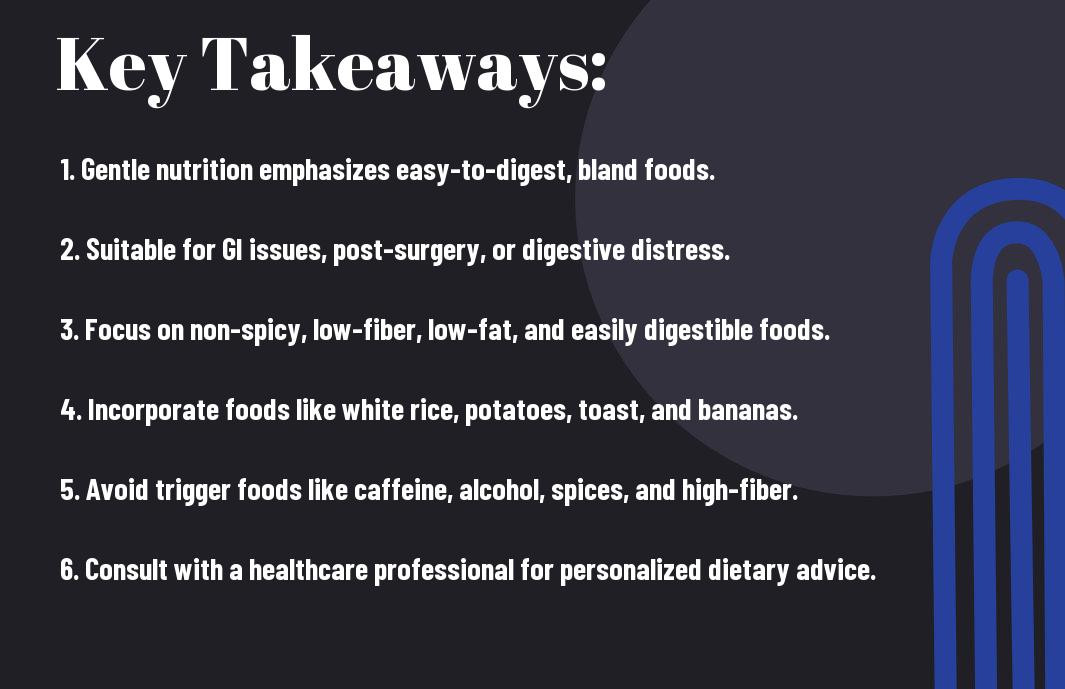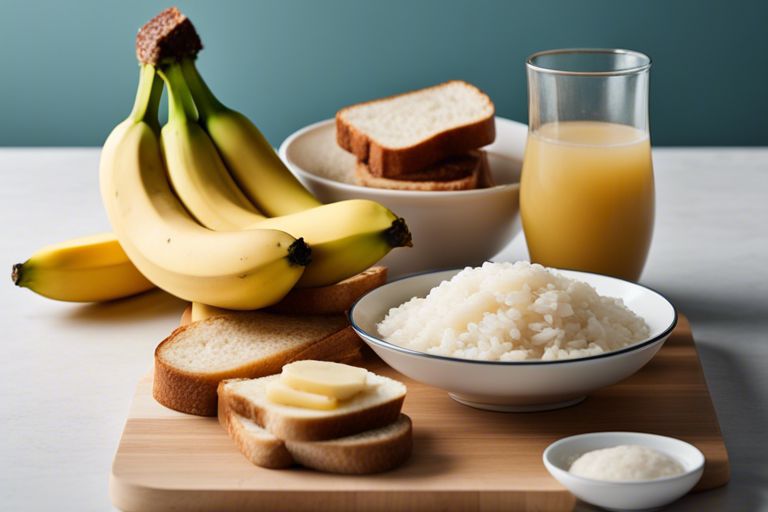#Bland diets are often recommended for individuals experiencing digestive issues or recovering from illnesses. The bland diet focuses on consuming foods that are gentle on the stomach and easy to digest, helping to reduce symptoms like bloating, gas, and diarrhea. This guide will explore into the principles of the bland diet, outlining the types of foods to include and avoid, as well as the potential benefits and precautions associated with this eating pattern.

Table of Contents
Fundamentals of the Bland Diet
Definition and Core Principles
For those unfamiliar with the Bland Diet, it is a therapeutic eating plan that focuses on foods that are gentle on the digestive system. The core principles of the Bland Diet include consuming foods that are low in fiber, bland in taste, and easy to digest. This diet aims to reduce irritation in the gastrointestinal tract, making it ideal for individuals with digestive issues.
Who Can Benefit From a Bland Diet?
Core individuals who can benefit from a Bland Diet include those suffering from gastrointestinal disorders such as gastritis, reflux, ulcers, or inflammatory bowel diseases. The diet can also be beneficial for individuals recovering from stomach surgeries or experiencing digestive discomfort.
Fundamentally, the Bland Diet focuses on providing relief to the digestive system by limiting foods that may trigger irritation or inflammation. It emphasizes easy-to-digest, non-spicy, and non-acidic foods to help soothe the stomach and prevent further discomfort. It is important to consult a healthcare provider or a registered dietitian before starting this diet, as it may not provide all the imperative nutrients needed for long-term health.
Implementing the Bland Diet
Foods to Include
If you have been advised to follow a bland diet, incorporating certain foods can help alleviate gastrointestinal issues. Rice, plain oatmeal, cooked carrots, bananas, and skinless poultry are gentle on the stomach and provide necessary nutrients without triggering any discomfort. These foods are easy to digest and can help soothe any digestive distress you may be experiencing.
Foods to Avoid
If you are following a bland diet, it is important to avoid spicy foods, fried foods, citrus fruits, caffeine, and alcohol. These items can irritate the stomach lining and exacerbate symptoms such as heartburn, acid reflux, or digestive upset. By eliminating these trigger foods, you can help calm your digestive system and promote overall gastrointestinal health.
To protect your digestive system, it is crucial to adhere strictly to the foods to avoid on a bland diet. Spicy foods can cause inflammation, fried foods can be hard to digest, citrus fruits contain high levels of acidity, caffeine can increase stomach acid production, and alcohol can irritate the stomach lining. By avoiding these problematic foods, you can give your digestive system the chance to heal and function optimally.
Bland Diet Meal Planning
Now, let’s investigate into the practical aspect of following a bland diet through meal planning. This process is crucial in ensuring you stick to the guidelines and meet your nutritional needs while avoiding irritating foods.
Sample Meal Plans
Meal planning can help you create balanced meals that are gentle on your digestive system. Consider including foods like boiled potatoes, steamed carrots, baked chicken, and plain rice in your meals. Start your day with oatmeal topped with a banana for breakfast, a simple vegetable stir-fry with tofu for lunch, and baked fish with quinoa and steamed broccoli for dinner.
Tips for Maintaining Variety and Interest
Interest in a bland diet can wane if you don’t find ways to add variety to your meals. To keep things interesting, experiment with different herbs and spices such as ginger, turmeric, and cumin to enhance flavors. Try incorporating different cooking methods like grilling, baking, or steaming to keep things exciting. Assume that a little creativity can go a long way in keeping your meals enjoyable.
Interest in a bland diet can wane if you don’t find ways to add variety to your meals. To keep things interesting, experiment with different herbs and spices such as ginger, turmeric, and cumin to enhance flavors. Try incorporating different cooking methods like grilling, baking, or steaming to keep things exciting. Assume that a little creativity can go a long way in keeping your meals enjoyable.

Challenges and Considerations
Potential Nutritional Shortcomings
On a bland diet, one potential concern is the lack of variety in flavors and textures, which can lead to nutritional shortcomings. Essential nutrients such as vitamins, minerals, and fiber may be limited in the absence of a diverse range of foods. It is important to find creative ways to incorporate a variety of nutrient-dense options within the limitations of a bland diet to prevent deficiencies.
Strategies for Eating Out and Social Events
Social gatherings and dining out can pose challenges for individuals following a bland diet. It can be difficult to find suitable options on menus that align with the restrictions of the diet. In such situations, it is crucial to plan ahead by contacting the restaurant in advance to discuss dietary requirements. Additionally, bringing small portions of approved foods or asking for simple preparations, such as steamed vegetables or grilled proteins, can help navigate such events successfully.
When following a bland diet, it is crucial to prioritize nutritional balance while still adhering to the restrictions. Making conscious choices and seeking out nutrient-dense options can help offset any potential shortcomings. Remember to communicate openly with friends and family about your dietary needs to ensure a positive and inclusive experience during social events.
Conclusion
As a reminder, the bland diet provides a gentle approach to nutrition by focusing on easily digestible foods that can help soothe digestive issues and reduce irritation. By selecting plain, simple foods and avoiding spices, fats, and acidic ingredients, this diet can be beneficial for individuals with stomach problems, such as gastritis, ulcers, or acid reflux. While it may not be the most exciting or flavorful way to eat, the bland diet can provide relief and promote healing for those experiencing gastrointestinal discomfort. Consulting with a healthcare professional or dietitian is recommended before making any significant dietary changes.
FAQ
Q: What is the Gentle Nutrition – The Bland Diet?
A: The Gentle Nutrition, also known as the Bland Diet, is a dietary approach that focuses on consuming easily digestible and mild foods to help alleviate digestive issues or gastrointestinal discomfort.
Q: What are the key principles of the Bland Diet?
A: The key principles of the Bland Diet include consuming foods that are low in fiber, low in fat, and free from spices or irritants. The goal is to give the digestive system a break and reduce irritation.
Q: What foods are recommended on the Bland Diet?
A: Recommended foods on the Bland Diet include bananas, applesauce, cooked cereals like oatmeal, boiled or baked potatoes, lean proteins like skinless poultry or fish, steamed vegetables, and low-fat dairy products. It is important to avoid caffeine, alcohol, spicy foods, and high-fat foods.
 hqsportz Personal Website | Tell Information about Sport, Fashion And Health
hqsportz Personal Website | Tell Information about Sport, Fashion And Health



